Phylum Placozoa
Characteristics
- Flattened, asymmetric; can change shape
- 2 cell layers separated by gel-like mesenchyme
- Small, <2 mm diameter
- Glides (using flagella) over substrates in shallow marine waters
- Only 1 described species
|
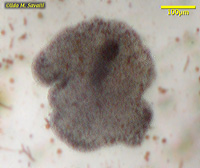
Placozoan, Trichoplax adhaerens
|
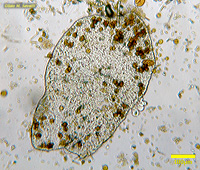
Placozoan, Trichoplax adhaerens
|
|
Phylum Ctenophora
Characteristics
- Diploblastic; endoderm & ectoderm separated by mesenchyme
- Biradial symmetry
- Gastrovascular cavity with anal pores
- No alternation of generations; no sessile stage
- 8 combs (rows of ciliary plates)
- Most with pair of long tentacles
|

Sea Gooseberry, Pleurobranchia sp.
See also labeled photo.
|
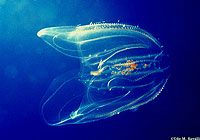
Sea Walnut, Mnemiopsis leidyi
|
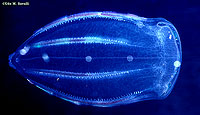
Beröe's Comb Jelly, Beroe cucumis
|
|
Phylum Xenacoelomorpha
Characteristics
- Acoels and Xenoturbellids
- Triploblastic, acoelomate
- Bilaterally symmetric
- Minimal cephalization; lack central nervous system
- Small size (<2 mm for most); dorso-ventrally flattened
- Lack digestive cavity: feed via mass of mid-ventral digestive cells
- Free-living in marine environments
- Formerly considered part of Phylum Platyhelminthes (specifically Turbellarians)
|
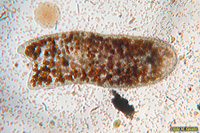
Brown Acoel, possibly Heterochaerus sp.; the brown structures are endosymbiotic dinoflagellates
|
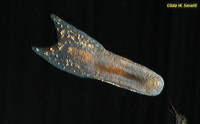
Acoel Flatworm, possibly Amphiscolops sp.
|
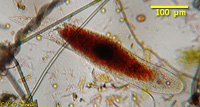
Acoel flatworm, possibly Philocelis sp. Note statocyst.
|
|